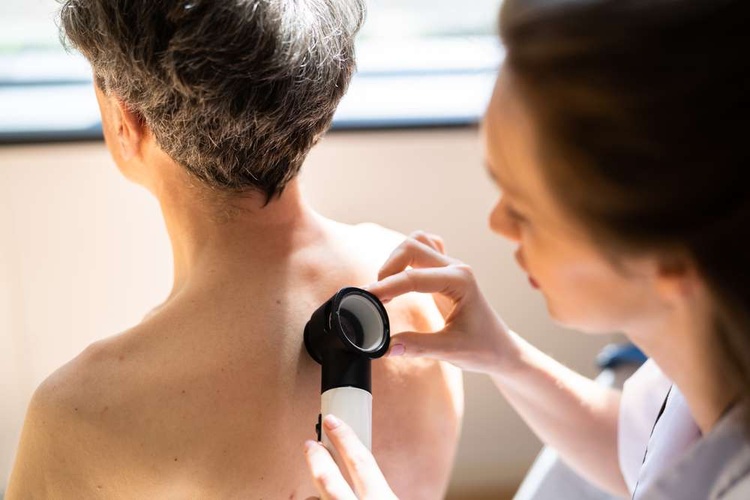Understanding Skin Cancer: Prevention, Detection, and Treatment
Skin cancer represents the abnormal growth of skin cells, typically developing on skin exposed to sunlight, though it can occur anywhere on the body. It affects people of all skin tones, though those with lighter skin have a higher risk. With over five million cases diagnosed annually in the United States alone, skin cancer has become a significant public health concern that requires awareness, prevention strategies, and regular screening.

Skin cancer represents a significant health concern that develops when skin cells grow abnormally due to DNA damage, often caused by ultraviolet radiation exposure. While it can affect anyone regardless of age or skin type, understanding the risk factors and protective measures can significantly reduce your chances of developing this condition.
What is Skin Cancer and How Does it Develop?
Skin cancer occurs when skin cells undergo genetic mutations that cause them to multiply uncontrollably. The primary culprit behind these mutations is ultraviolet radiation from the sun or artificial sources like tanning beds. This radiation damages the DNA within skin cells, disrupting their normal growth cycle. The three main types include basal cell carcinoma, squamous cell carcinoma, and melanoma. Basal cell carcinoma develops in the deepest layer of the epidermis and rarely spreads to other parts of the body. Squamous cell carcinoma forms in the upper layers of skin and can spread if left untreated. Melanoma, though less common, is the most dangerous form as it can metastasize quickly to other organs.
How to Examine Moles and Recognize Changes
Regular self-examination of your skin is crucial for early detection of potential problems. The ABCDE method provides a systematic approach to evaluating moles and skin spots. A stands for Asymmetry - healthy moles are typically symmetrical, while cancerous ones may have irregular shapes. B represents Border irregularity - normal moles have smooth, even borders, whereas suspicious ones may have notched or blurred edges. C indicates Color variation - benign moles are usually uniform in color, while concerning ones may display multiple shades of brown, black, or other colors. D represents Diameter - moles larger than 6 millimeters (about the size of a pencil eraser) warrant attention. E stands for Evolving - any mole that changes in size, shape, color, or texture should be evaluated by a healthcare professional.
How Sunburn Relates to Skin Cancer Risk
Sunburn creates a direct pathway to skin cancer development by causing immediate and cumulative DNA damage to skin cells. Each sunburn episode triggers an inflammatory response as your body attempts to repair the damaged tissue. However, this repair process isn’t always perfect, and errors in DNA replication can lead to mutations that may eventually become cancerous. The relationship between sunburn and skin cancer risk is particularly strong during childhood and adolescence, when skin is more vulnerable to UV damage. Even a single severe sunburn during youth can double your lifetime risk of developing melanoma. Repeated sunburns compound this risk, creating a cumulative effect that increases cancer likelihood over time.
When to Consult Dermatology for Skin Concerns
Seeking professional dermatological evaluation is essential when you notice any suspicious changes in your skin. Schedule an appointment if you discover new moles or spots that appear after age 30, as most benign moles develop during childhood and early adulthood. Any existing mole that changes according to the ABCDE criteria requires immediate attention. Additionally, consult a dermatologist if you have sores that don’t heal within two weeks, unusual growths, or persistent itching or bleeding from skin lesions. People with fair skin, a family history of skin cancer, numerous moles, or a history of excessive sun exposure should consider annual skin screenings even without obvious symptoms.
Understanding Melanoma Signs
Melanoma presents unique warning signs that distinguish it from other skin cancers and benign moles. Unlike typical moles, melanomas often appear as new, unusual spots rather than changes to existing moles. They may resemble normal moles initially but display irregular characteristics upon closer inspection. Melanomas can appear anywhere on the body, including areas not typically exposed to sun, such as the soles of feet, palms, or under fingernails. In addition to following the ABCDE criteria, watch for moles that look different from others on your body, sometimes called the “ugly duckling” sign. Melanomas may also present as flat or raised lesions with irregular pigmentation, and they might feel different from surrounding skin - perhaps firmer or more tender to touch.
| Treatment Type | Provider Examples | Cost Estimation |
|---|---|---|
| Dermatology Consultation | Local dermatology clinics, hospital systems | $200-$400 per visit |
| Skin Biopsy | Dermatology practices, outpatient centers | $300-$800 per procedure |
| Mohs Surgery | Specialized dermatology centers | $1,500-$5,000 per procedure |
| Radiation Therapy | Cancer treatment centers, hospitals | $10,000-$50,000 per course |
| Immunotherapy | Oncology centers, major medical institutions | $100,000-$200,000 annually |
Prices, rates, or cost estimates mentioned in this article are based on the latest available information but may change over time. Independent research is advised before making financial decisions.
Prevention remains the most effective strategy against skin cancer. This includes using broad-spectrum sunscreen with at least SPF 30, seeking shade during peak sun hours, wearing protective clothing, and avoiding tanning beds. Regular self-examinations and professional screenings enable early detection when treatment is most successful. Understanding your personal risk factors, recognizing warning signs, and maintaining open communication with healthcare providers creates a comprehensive approach to skin cancer prevention and management. Early detection and prompt treatment significantly improve outcomes for all types of skin cancer, making awareness and vigilance your best defense against this preventable disease.
This article is for informational purposes only and should not be considered medical advice. Please consult a qualified healthcare professional for personalized guidance and treatment.




